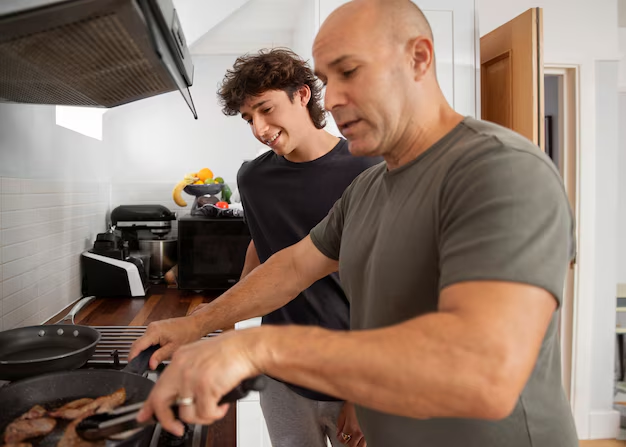Troubleshooting Your Refrigerator Light: A Step-by-Step Guide
When the light inside your refrigerator flickers or goes out altogether, it can become more than just a minor inconvenience. For those midnight snack runs or digging through leftovers, proper lighting is crucial. Tackling this common issue yourself can save you time and money, and empower you with a little more control over your home maintenance tasks. Here’s a comprehensive guide to diagnosing and fixing your refrigerator light issues.
Why Is My Refrigerator Light Not Working?
Before diving into repairs, let's understand why your refrigerator light might not work in the first place. Many refrigerator light problems stem from:
- Burnt-out Bulbs: Probably the most common issue. Just like any regular bulb, the refrigerator bulb can burn out over time.
- Faulty Door Switch: If the door switch malfunctions, it could lead to the light not turning on.
- Electrical Issues: Problems with the wiring or power supply can prevent the light from functioning.
- Damaged Light Socket or Control Board: If other components are faulty, they may indirectly affect the bulb's operation.
Safety First: Precautions Before You Start
Working with electrical appliances necessitates caution. Here are some safety tips to follow before you start:
- Unplug the refrigerator: Before touching anything, make sure the appliance is unplugged to avoid electric shock.
- Use protective gear: Wear gloves to protect against any accidental cuts or shocks.
- Avoid wet surroundings: Ensure your hands and the area around the refrigerator are dry.
Step-by-Step Guide to Fixing Your Refrigerator Light
Step 1: Check the Bulb
🔍 Inspect the Bulb: Start by checking if the bulb has burnt out. Open the refrigerator and take note if you see a dark or broken filament.
- Replace if Necessary: If the bulb is burnt out, replace it with a new one of the same type and wattage. Most refrigerator light bulbs are 40 watts, but double-check your specs.
- Installation Tip: Screw the new bulb in firmly but do not overtighten, as this can damage the socket.
Pro Tip: Keep a spare bulb on hand; it’s an inexpensive way to ensure that you are always prepared for a replacement.
Step 2: Examine the Door Switch
🛠️ Check the Door Switch: The door switch is responsible for turning on the light when the fridge door is open.
- Locate It: Typically located along the edge of the door frame.
- Test Its Functionality: Press and release the switch button to see if the light responds.
- Clean Sticky Switches: Sometimes dirt accumulation prevents proper function; clean it with a damp cloth.
If cleaning doesn’t resolve the issue, you may need to replace the door switch. Replacements are generally inexpensive and available at most hardware stores.
Step 3: Electrical Assessment
🔌 Investigate the Wiring: If the above steps did not solve the problem, it may be time to look into electrical issues.
- Inspect the Power Supply: Ensure that your refrigerator is properly plugged in and that the outlet functions correctly.
- Examine the Wiring: Check for any visible damage to the cord or internal wires that connect to the light.
Step 4: Test the Light Socket
💡 Inspect the Socket: With the refrigerator unplugged, take a closer look at the light socket.
- Look for Corrosion or Damage: Damaged sockets can prevent a bulb from lighting.
- Use a Multimeter: Test the socket for continuity. If there's no continuity, replace the socket.
Step 5: Consider Control Board Issues
🖥️ Control Board: Advanced troubleshooting often involves looking at the control board.
- Call a Professional: If you suspect an issue beyond a simple bulb or switch, consider seeking professional help. Work involving the control board can be intricate and requires expertise.
Quick Troubleshooting Recap
It's always handy to have a quick summary when tackling a problem. Here’s a concise recap of steps to troubleshoot your refrigerator light problem:
- 🕯️ Replace the bulb: The simplest solution.
- 🛠️ Check the door switch: Ensure it’s functioning when door opens or closes.
- 🔌 Verify power and wiring: Ensure no breaks or faults.
- 💡 Inspect the socket: Replace if damaged or corroded.
- 🖥️ Consider control board issues: When other steps don’t resolve the issue.
Maintenance Tips for Preventing Future Issues
Preventing issues with your refrigerator light is often about regular maintenance and awareness.
- Avoid Overloading: Keep the area around the bulb clear to avoid overheating.
- Regular Inspections: Check the bulb and switch for signs of wear or damage every few months.
- Unplug for Cleaning: Always unplug the fridge for any internal cleaning to avoid electrical issues.
When to Call a Professional
Understanding when an issue is beyond a DIY fix is crucial. If the problem persists despite following the steps above, or you encounter unexpected complications, it might be time to consult a professional technician. They can accurately diagnose more complex electrical or hardware issues and ensure that your refrigerator returns to optimal functionality safely.
Refrigerators are an essential part of our daily lives, and keeping them fully operational is key to preserving food and maintaining convenience. With a bit of knowledge and the right approach, fixing a refrigerator light can be a straightforward task. By following this guide, you can confidently approach the task and ensure your appliance is in good working order again.
